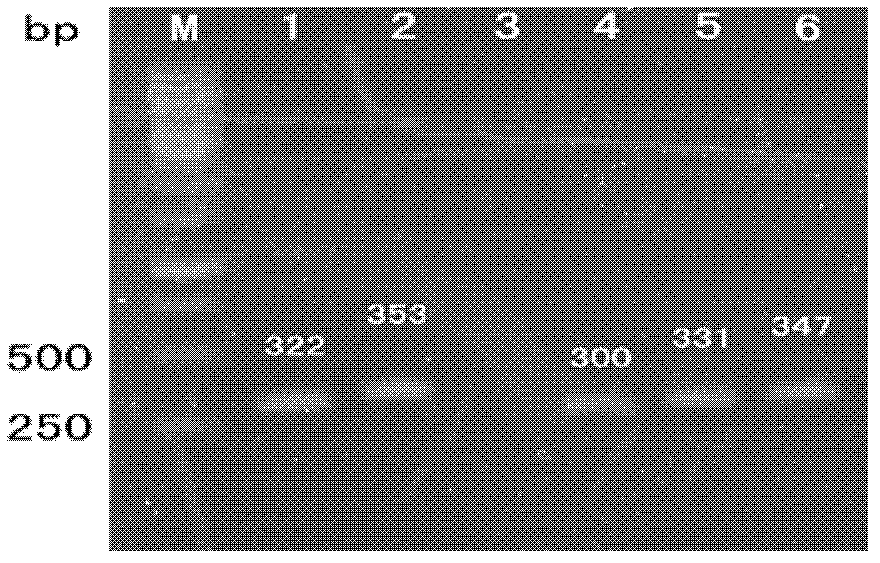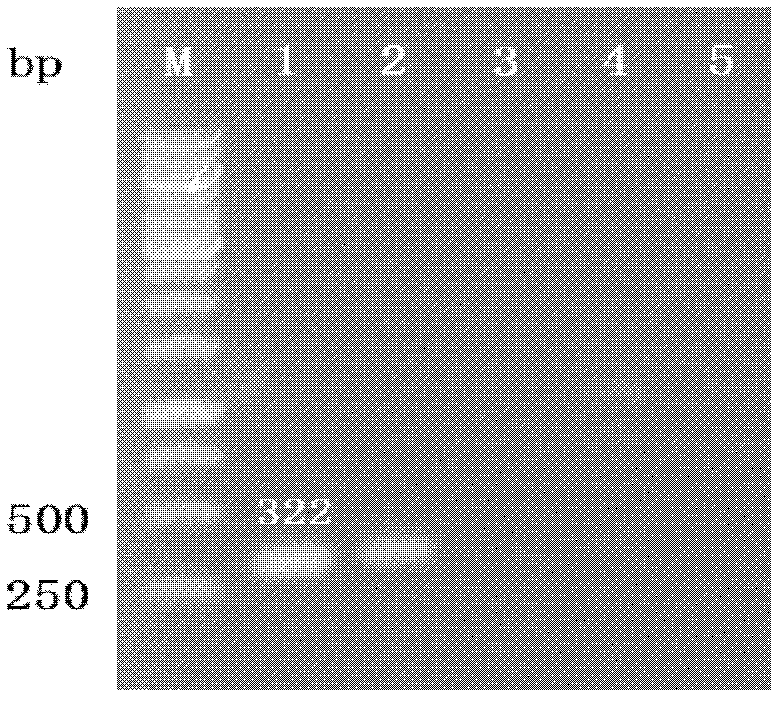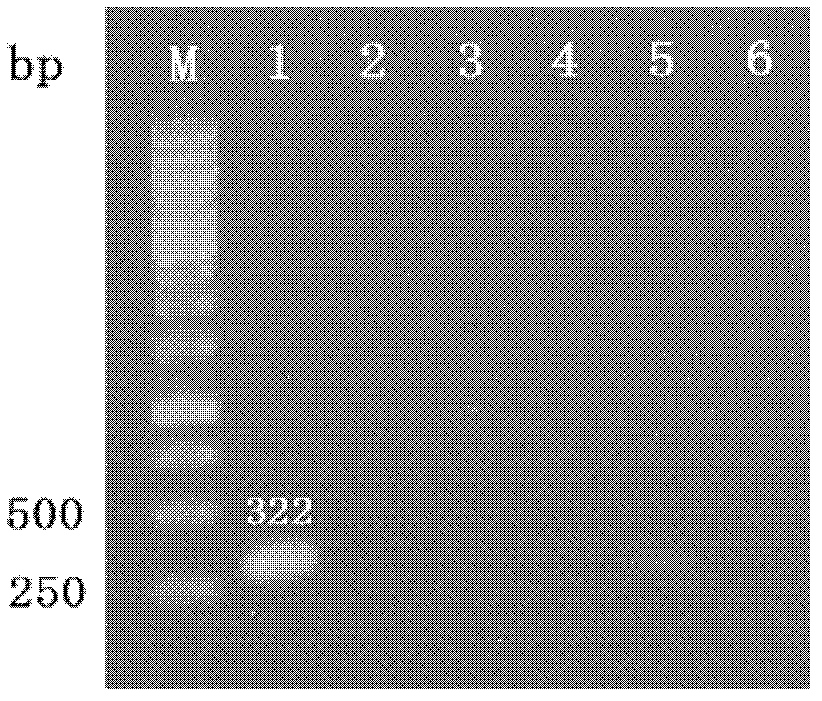Specific pcr detection method of clubroot pathogen in soil
A detection method and specific technology, which is applied in the field of specific PCR detection of clubroot in soil, can solve the problems of low sensitivity and interference, and achieve the effects of wide applicability, rapid detection and sensitive method
- Summary
- Abstract
- Description
- Claims
- Application Information
AI Technical Summary
Benefits of technology
Problems solved by technology
Method used
Image
Examples
Embodiment 1
[0058] Example 1 Determination of Molecular Characteristic Sequence of Clubroot Phytophthora in Shanghai Area
[0059] 1) Root group DNA extraction of clubroot
[0060] Grind the deformed and swollen diseased roots of the cleaned vegetables with liquid nitrogen, take 50 mg of ground diseased root samples and add 1 mL of extract (50 mmol / L Tris-HCl, 150 mmol / L NaCl, 100 mmol / L EDTA) to 1.5 mL In an Eppendorf centrifuge tube, shake and mix, then add 0.1mL 20% SDS to mix, then place the centrifuge tube in a shaker at 37°C and shake slowly for 1h, add 0.15mL 5mol / L NaCl solution to each tube, mix slowly, add 0.13mL CTAB / NaCl solution (10% CTAB in 0.7mol / L NaCl), mix well, put in water bath at 65°C for 20min, shake once every few minutes, cool to room temperature, add an equal volume of chloroform / isoamyl alcohol, Shake vigorously for 5 minutes, centrifuge at 10,000r / min for 12min, centrifuge the supernatant at 12,000r / min for 5min, transfer the supernatant to a new tube, add 0.6 ...
Embodiment 2
[0068] Example 2 Comparison of the Molecular Characteristic Sequences of Clubroot of Cabbage in Shanghai Area with Different Types of Pathogens in the Class Plasmodium and Other Different Types of Soil Pathogens
[0069] Compare the molecular signature sequences of the above-mentioned obtained Plasmodium cabbage strains with different types of pathogenic bacteria of the Placidiomycetes class, different types of pathogenic bacteria within the Oomycetes class, and different types of Fusarium bacteria in the soil, respectively, to find the strains of Plasmodium cabbage pathogens Specific regions of DNA.
[0070] 1) Sequence similarity comparison of the molecular characteristics of Plasmodium cabbage and different types of pathogenic bacteria of Plasmodium (wherein, the bases with higher identical frequency at the same position are marked in gray):
[0071] Wherein A: the sequence (SEQ ID No 10) of Pb-Shanghai of Shanghai cabbage clubroot
[0072] B: Plasmodiophora brasiccae sequ...
Embodiment 3
[0105] Example 3 Specific PCR Amplification of Brassicola brassica in Roots of Cabbage Clubroot
[0106] By comparing the sequence with other species of Clubroot, Oomycetes pathogenic species in soil and Fusarium species, 6 primer pairs were designed, and according to the Tm value of the primer pairs, the annealing temperature of PCR amplification was determined, and then the The root clubroot of bok choy was amplified by PCR, and the amplification reaction system was the same as in Example 1.
[0107] The amplification reaction conditions are as follows: 95°C for 5min for 1 cycle; 95°C for 30sec, 54°C for 30sec, 72°C for 45sec, 35 cycles; 72°C for 10min for 1 cycle.
[0108] The above-mentioned PCR amplification products were subjected to 1% Agrose gel electrophoresis, and the results showed that: the primer pairs 1, 2, 4, 5, and 6 of the 6 primers designed in the experiment amplified the target pathogen--Pluzophylla brassicae root, respectively. The only specific fragments ...
PUM
 Login to View More
Login to View More Abstract
Description
Claims
Application Information
 Login to View More
Login to View More - R&D
- Intellectual Property
- Life Sciences
- Materials
- Tech Scout
- Unparalleled Data Quality
- Higher Quality Content
- 60% Fewer Hallucinations
Browse by: Latest US Patents, China's latest patents, Technical Efficacy Thesaurus, Application Domain, Technology Topic, Popular Technical Reports.
© 2025 PatSnap. All rights reserved.Legal|Privacy policy|Modern Slavery Act Transparency Statement|Sitemap|About US| Contact US: help@patsnap.com



